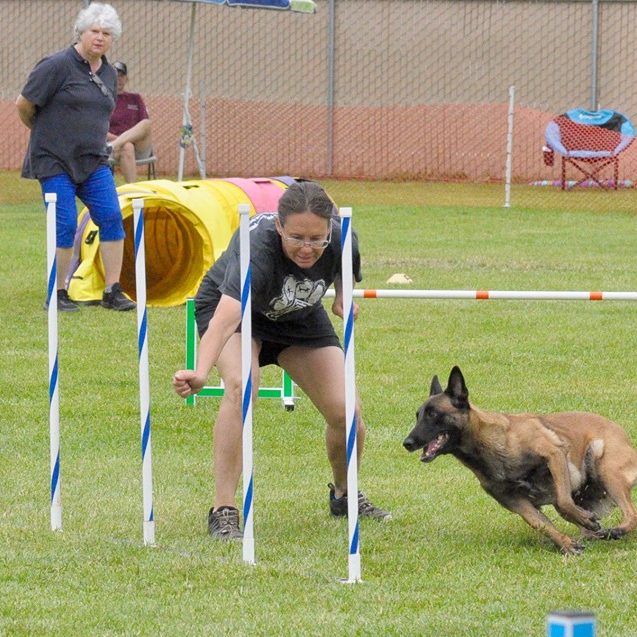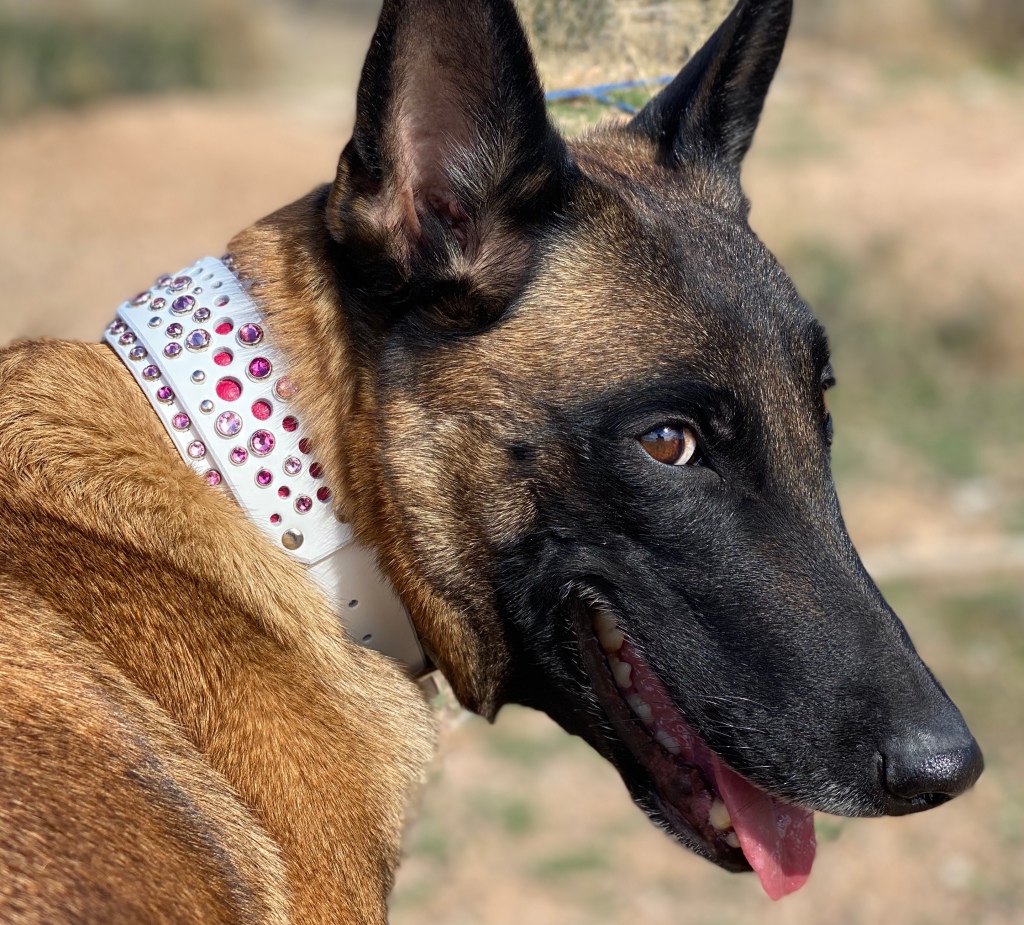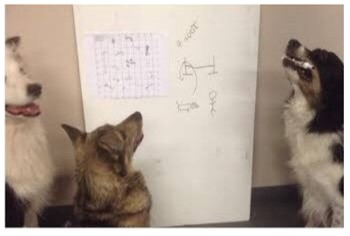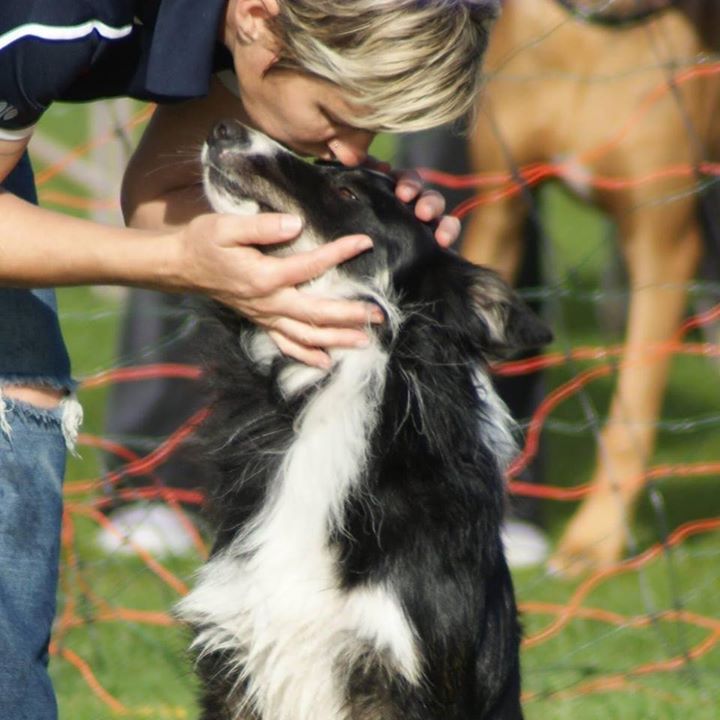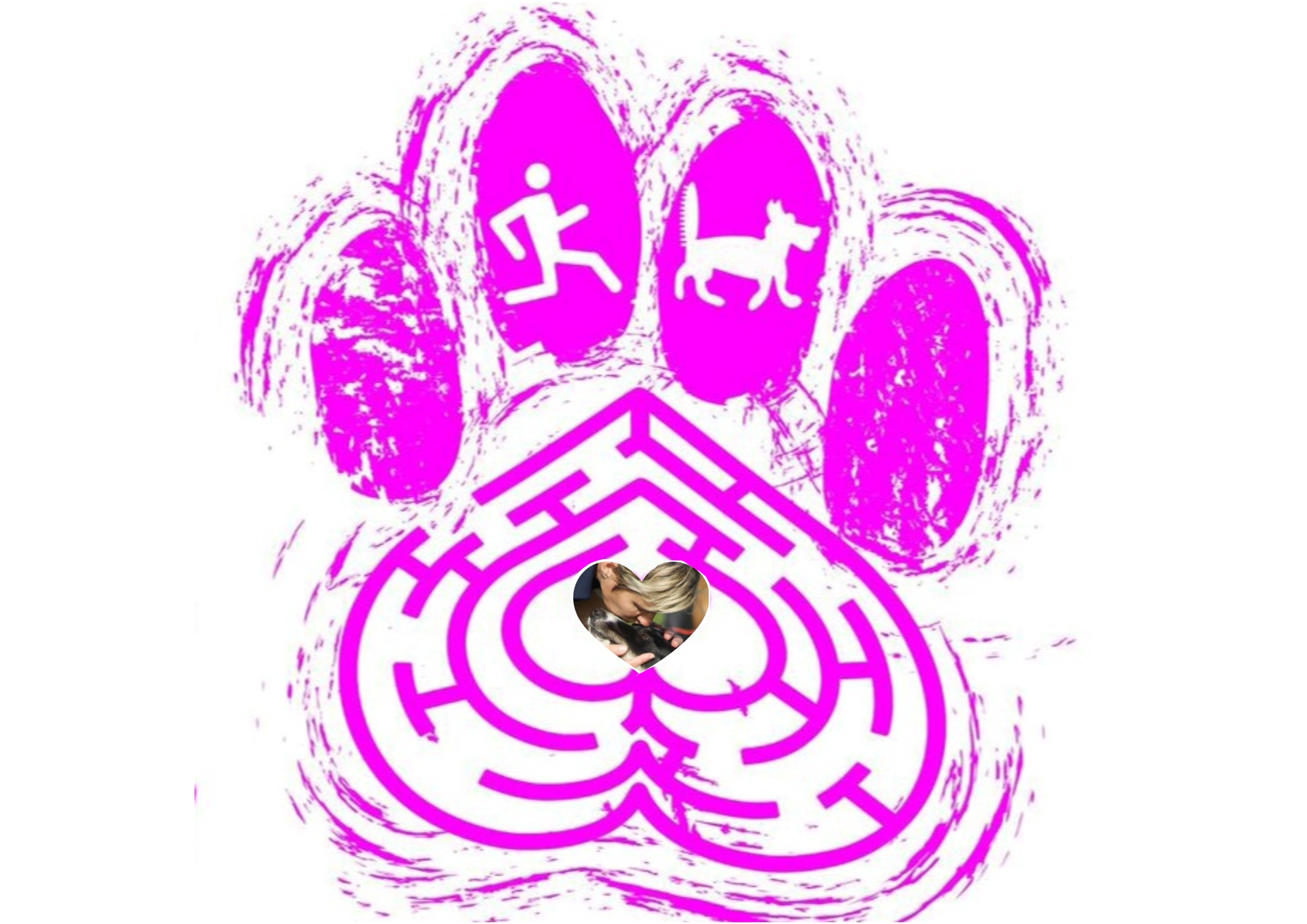I was listening to Ted Talk the other day and Joe Kowan was discussing stage fright; the next day I was experiencing stage fright first hand as Bob and I did our first REAL disc demo. I do agility every day, I run in a trial some weekends, I have trialed at the highest level in agility; I can do agility in my sleep. Disc on the other hand, is new to me. And even though I practice, I find it hard. And even though Bob likes it, he is not perfect. We have a looooong way to go.
Performing in front of other people causes anxiety and stress, for both the DOG and the HANDLER. Don’t deny it! Embrace it! I knew that doing a Frisbee demo with Bob would be hard. I had run through my routine a million times in my head, I had done it a few times in real time. I like to visualize my disc performance or agility run from start to finish, including getting my dog from my crate, pottying them, warming up, doing the run, finishing, rewarding and cooling down. While this set of steps can help you be successful, don’t get too caught up in the “routine”, you have to be prepared for the unexpected and be flexible with your habits. Esteban Fernandezlopez discusses this in a Bad Dog Agility Podcast on Improving Mental Game. I like to plan what I am doing before an agility run but I am not going to freak out if I don’t have my special toy or certain treats. A routine is a great way to generate confidence at a trial! Read my post on getting organized for your agility run called Crate to Crate.
The disc demo went well because I trusted Bob to do what we had already done! And NO! I didn’t have treats out there! Just discs and my dog! We had also trained for this, practicing disc with the treats over on the table (although most of the time the Frisbee is the reward, some tricks like roll over, were taught with treats). It was hard to step out there in front of a crowd of people, my heart rate was elevated, and my breathing was faster, my thoughts were not clear; I couldn’t even remember all of the steps in our performance!!! But I took a deep breath, threw the first disc, and FAKED it!!! And I was naked! And so was Bob! No treats! No collar! Just trust and love for my dog and doing disc together!
Make sure you practice you AND your dog being naked! Train like you show, show like you train! Nothing is worse than your dog going through an extinction behavior (like not releasing from the dogwalk) because they are suddenly not getting treats at the rate they gets treats in training. Set up your training so that it is similar to how you trial!
When you are new to agility, obedience, flyball, schutzhund, tracking, fill in the blank with your dog sport of choice, you need a list of steps (called steps to perform) that you are going to mostly follow from start to finish, you need a positive attitude and a smile, you need a love for your dog and a trust in what you have done during training and you need to remember that you are doing this because it is FUN! Force yourself to smile if you have to!
If it isn’t fun, if it is too stressful, if your dog checks out and you can’t get them back, if you are vomiting in the bathroom (Cynosports 2009, not me but some unknown GP finalist), you should probably reassess your goals. We are NOT curing cancer!!! It is a dog sport! It is a hobby!
Here is a worksheet to help you design your own list of steps to perform, . This is just one of many worksheets that help my clients and I to be successful on our agility journey!

bob disc demo

